Let’s talk about one of my favorite perennials that’s been doing its own thing in my garden for years, after being planted from just a handful of bulbils: Egyptian walking onions.
These unusual plants (Allium x proliferum) are a hybrid of Allium cepa (cultivated onions) and Allium fistulosum (Welsh onions). They look like regular onions at first, growing tall and upright with hollow green stems, but as they mature, the quirky plants form reddish-purple bulbils on spikes that start to loop and twist until they stumble to the ground.
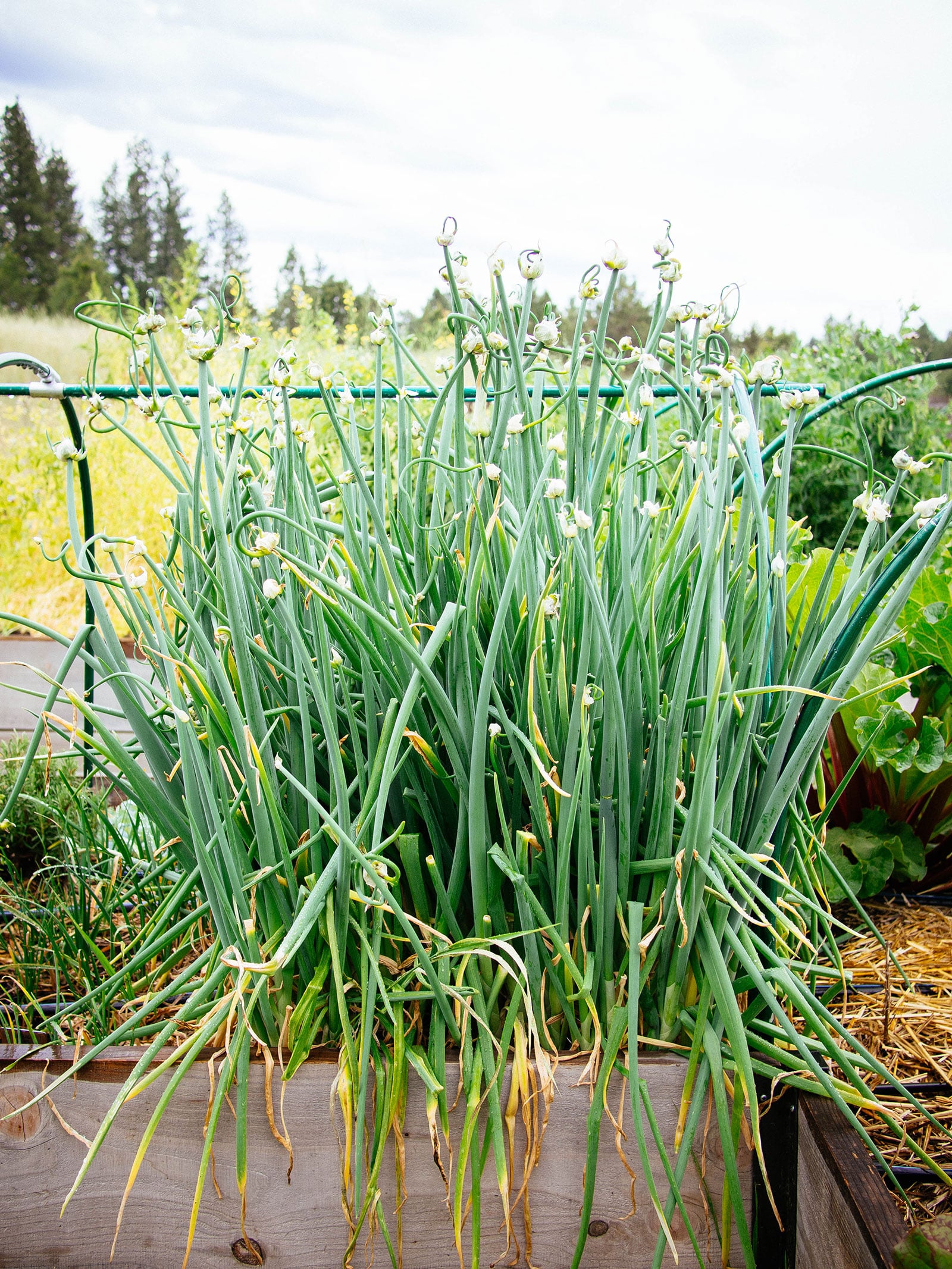
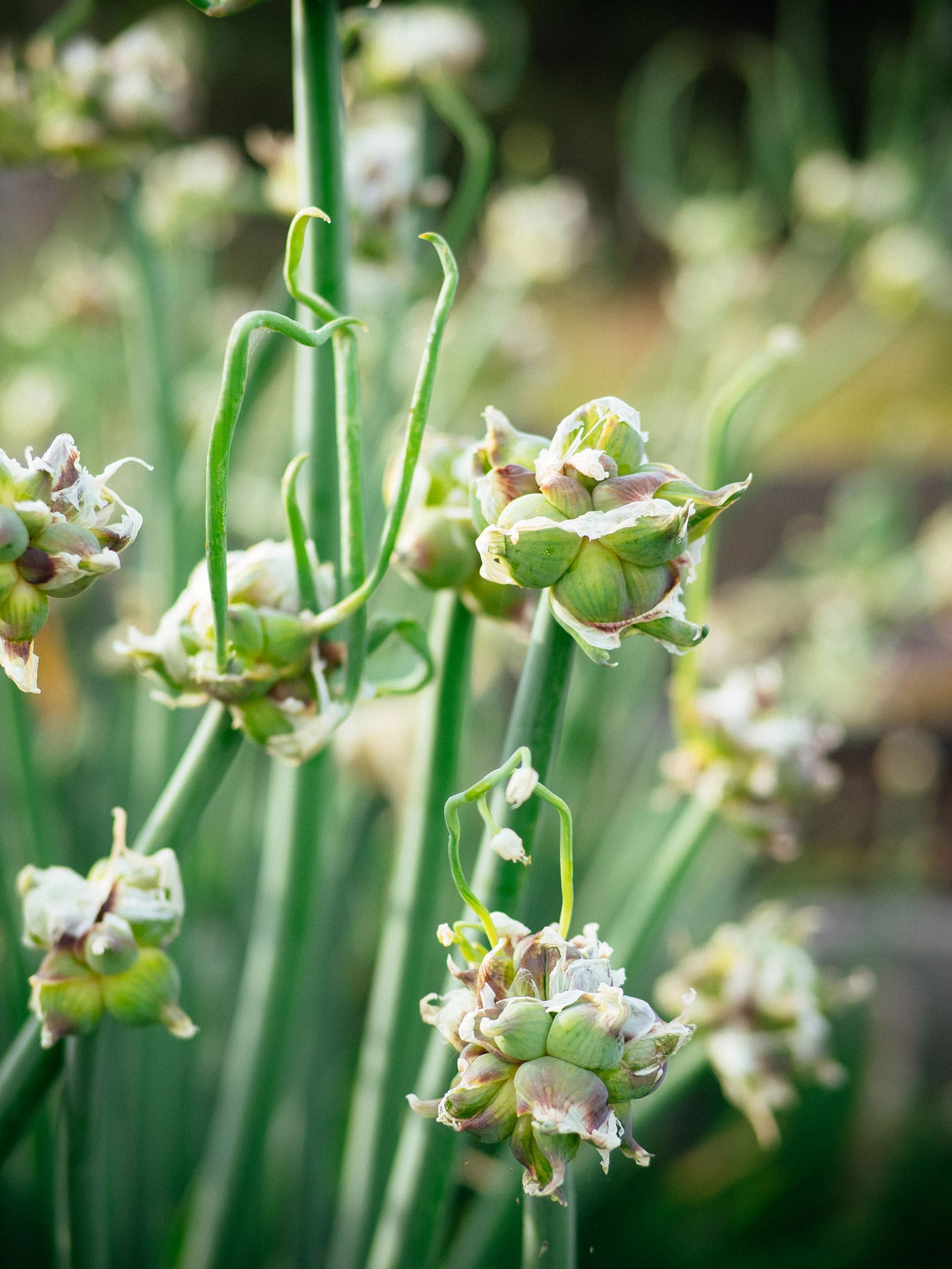
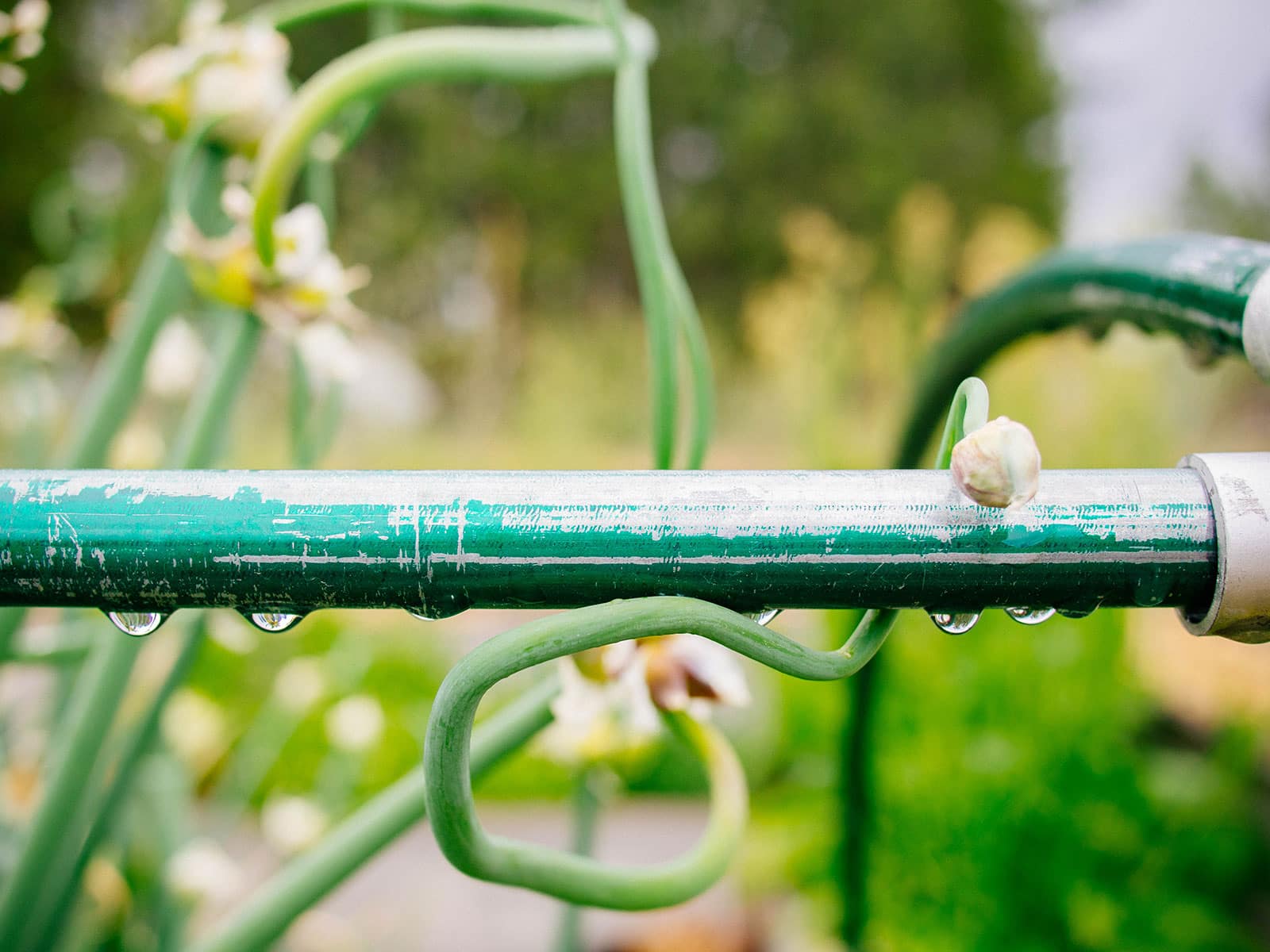
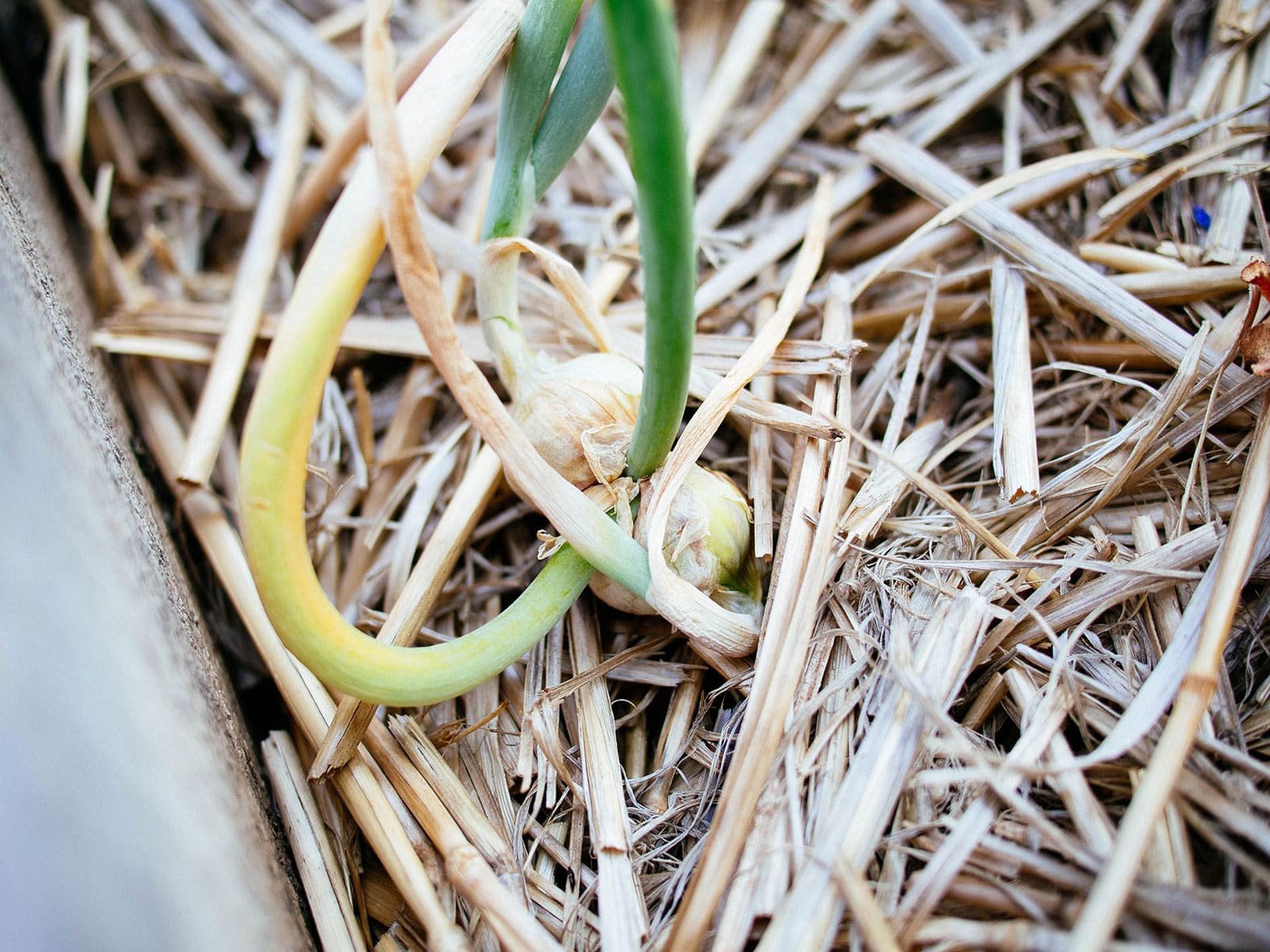
The name comes from the way the plants will “walk” across the soil when their stems flop over—top-heavy from the bulbils that appear in late summer—and establish a new clump of onions where the bulbils touch the soil and send out roots.
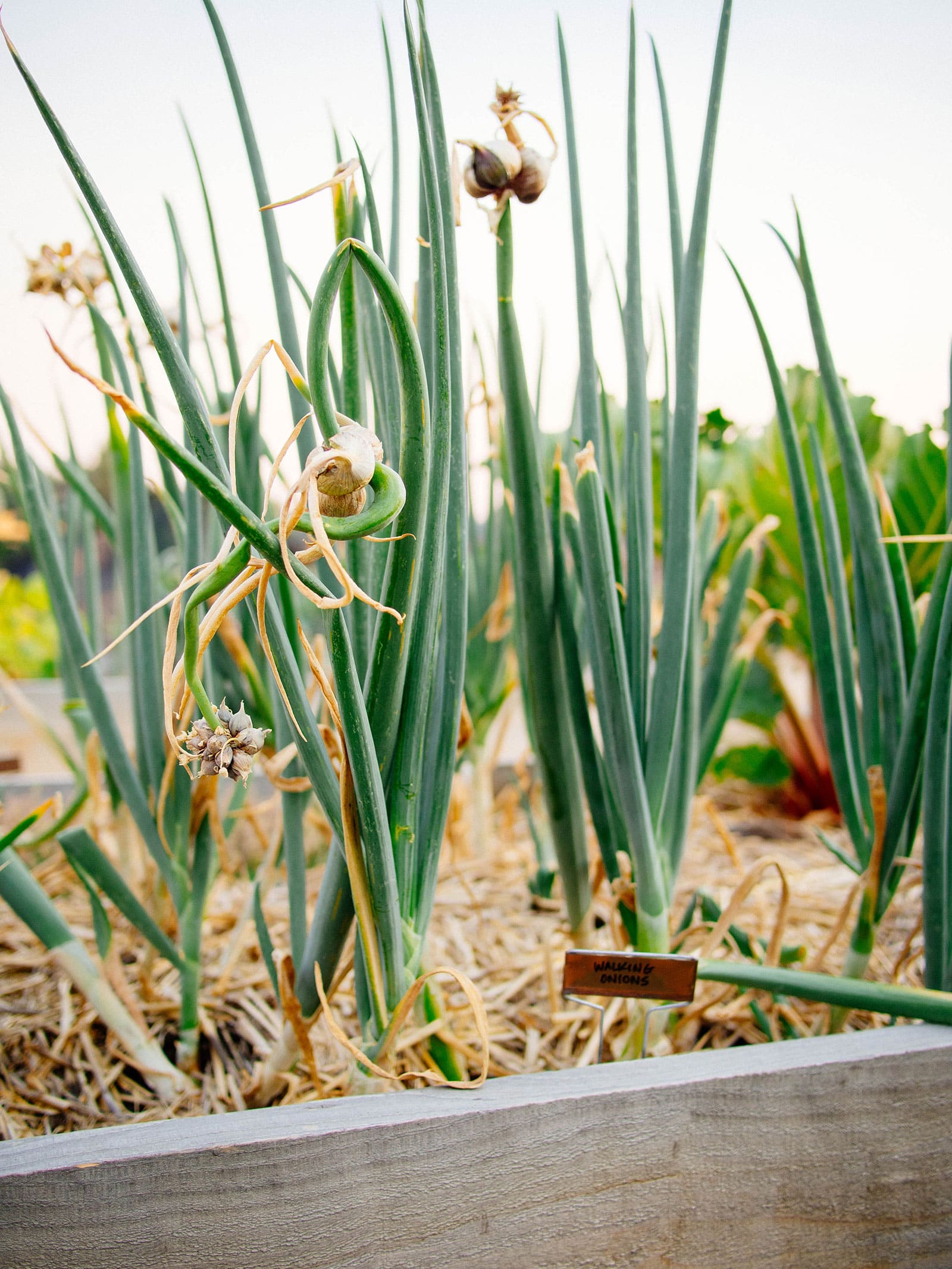
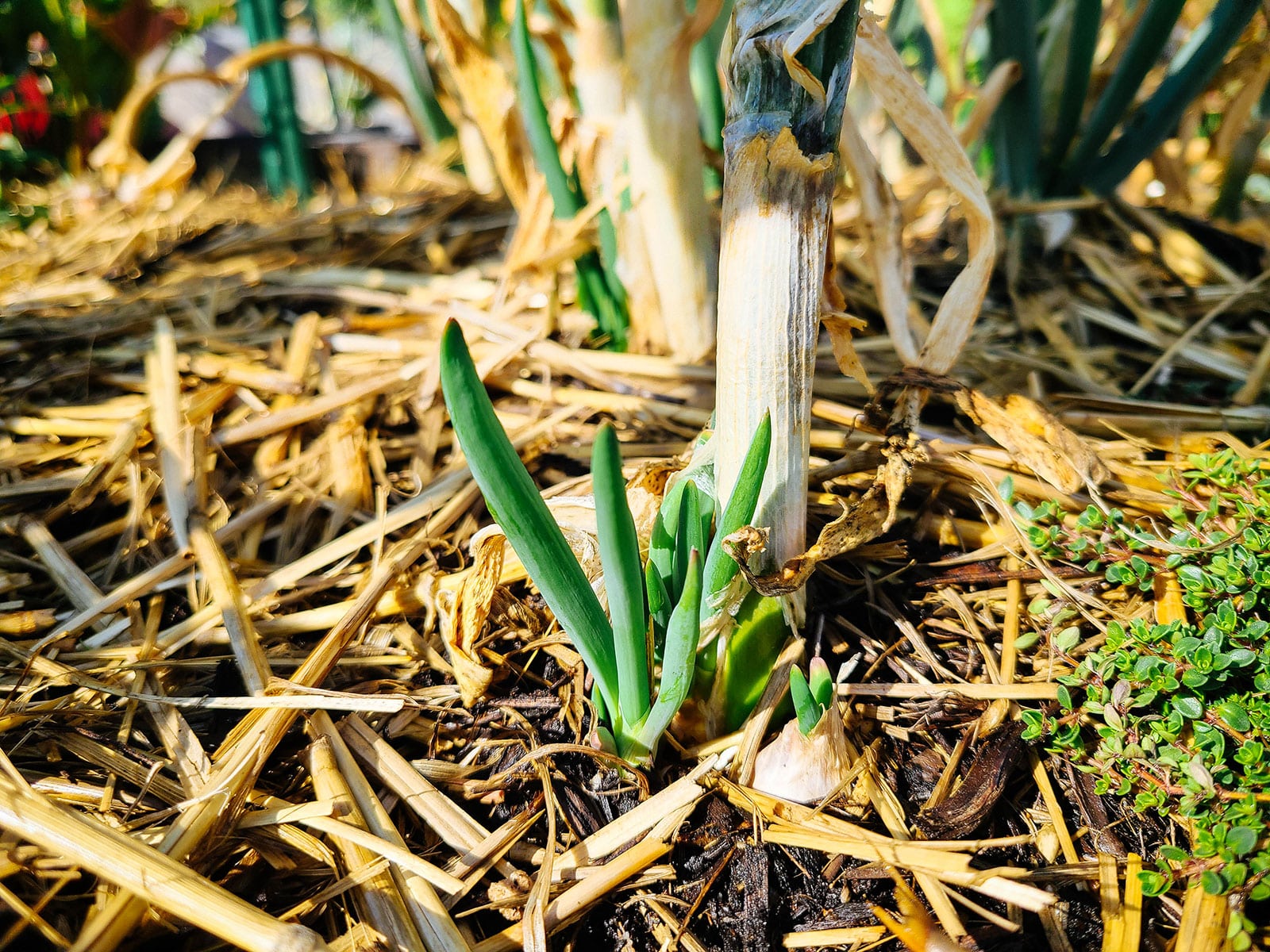
That means baby plants will often appear within a 2-foot radius of the mother plant! Then those babies will grow up, produce their own bulbils, and “walk” through the garden, self-propagating as they go.
As for the Egyptian part? That one’s still a mystery in horticulture and may have been an outdated historical association at some point.
Sometimes these are also called walking onions, tree onions, or topset onions, but they all refer to the same perennial onion, Allium x proliferum.
Why are they worth growing?
Egyptian walking onions are as low-maintenance as they go when it comes to edible plants. I have an affinity for perennial vegetables and walking onions are always one of the first to come back in spring in my zone 5 garden.
But they can actually survive much colder climes than that. Walking onions are hardy to zone 3 and will also grow trouble-free in zone 10.
They look pretty scruffy in winter and the leaves die back after a few hard freezes, but in late winter to very early spring, new green shoots start to grow under the snow and are usually ready for harvest soon after the snow melts. New shoots continue to appear through spring, summer, and fall from existing and newly replanted walking onions.
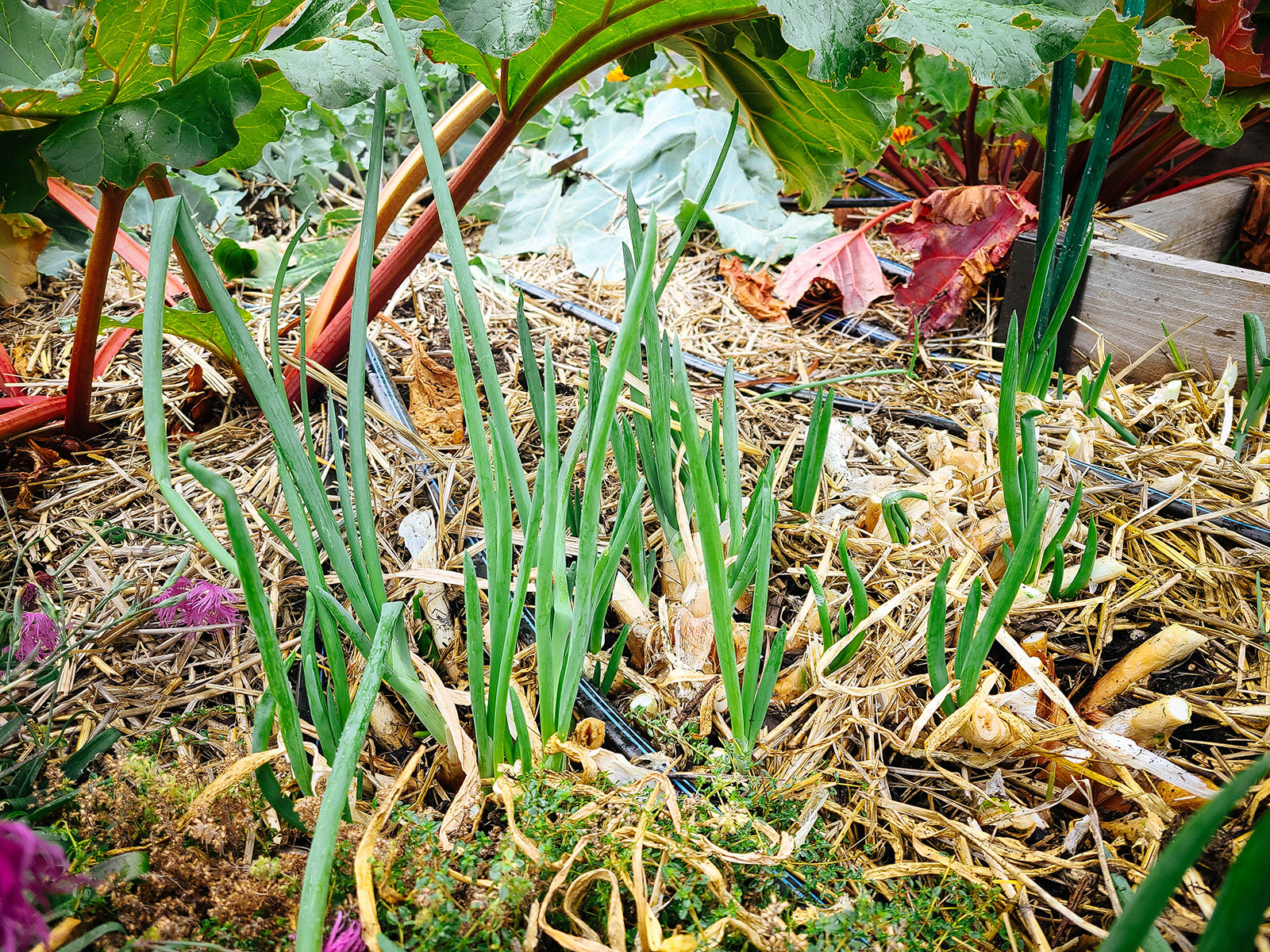
Rarely are the plants bothered by pests (of the insect kind or the wildlife kind). If you have black walnut trees in your yard that seem to stunt the growth of other plants, walking onions are not affected by juglone, so you can plant a patch of “forever onions,” as they’re often called, and enjoy their greenery year-round (or almost year-round, depending on your climate).
Despite the unique way in which they spread, walking onions don’t spread aggressively. It’s very easy to maintain a nice-sized stand and pick any onions or topsets that you don’t want to propagate.
How to obtain seeds
Egyptian walking onions don’t produce seeds; they reproduce via bulbils (small aerial bulblets), which are clones of the original plant and look just like miniature onions. These bulbils can be planted to produce more plants, similar to how garlic can be grown from bulbils.
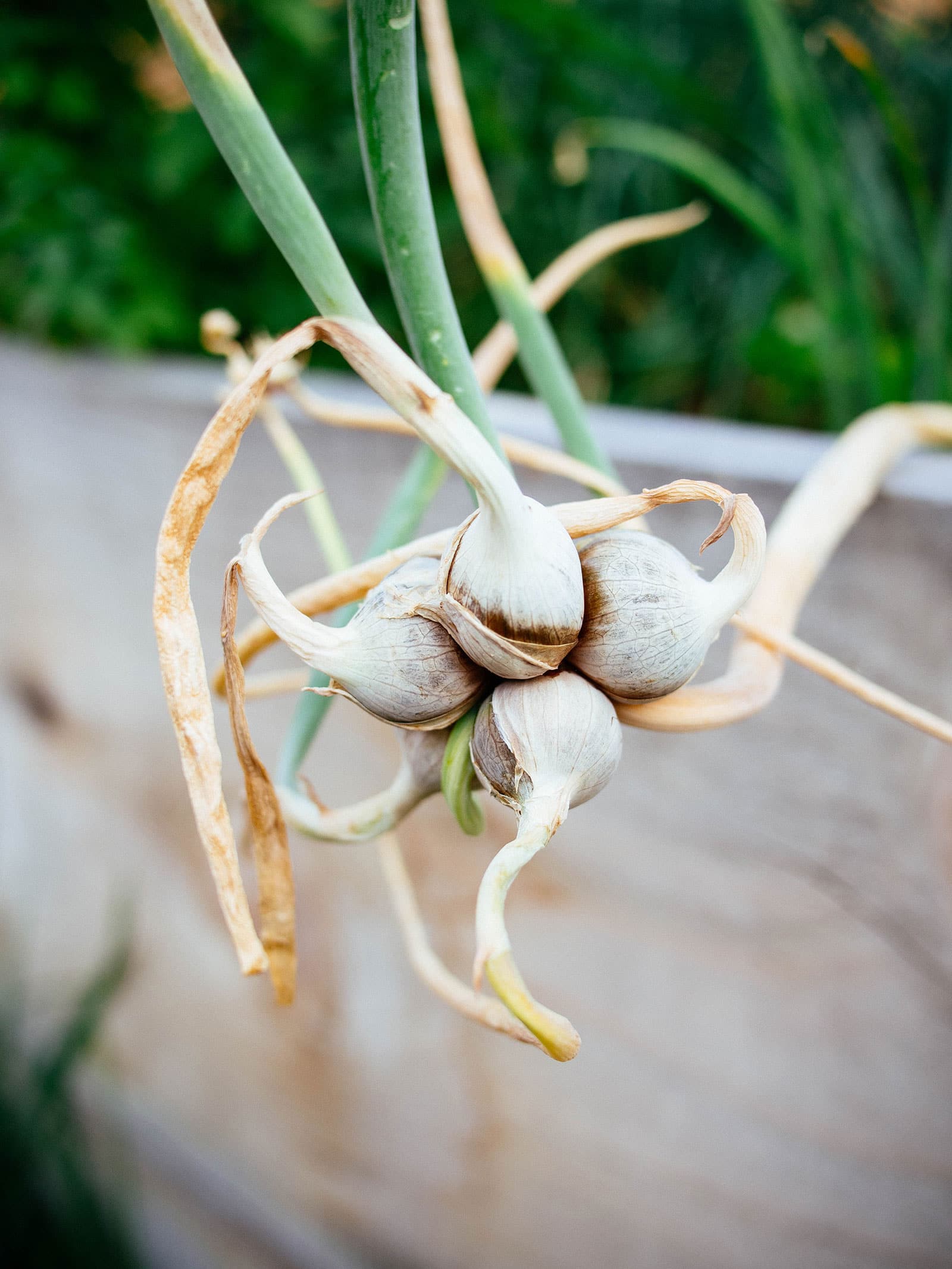
In mid to late summer, walking onions produce a stiff, thicker central stalk. But instead of flowers, the plant forms topsets (clusters of bulbils) at the top of the stalk, which then becomes heavy under all that weight and eventually falls over.
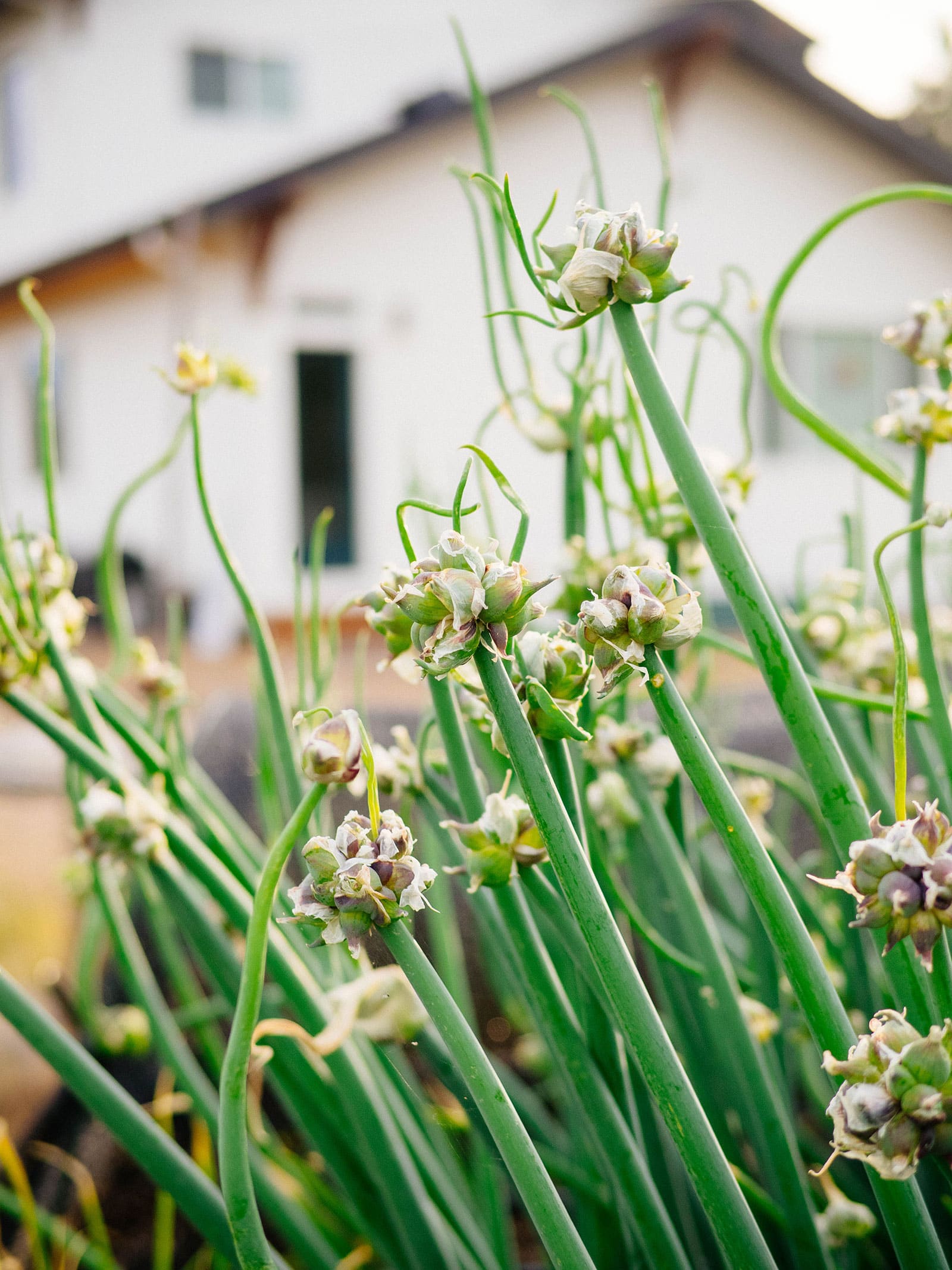
Each topset contains anywhere from a handful to a couple dozen bulbils, ranging from tiny to cherry size. Given the right conditions, the bulbils will begin to sprout and grow new plantlets, which may then form another stalk that produces more bulbils!
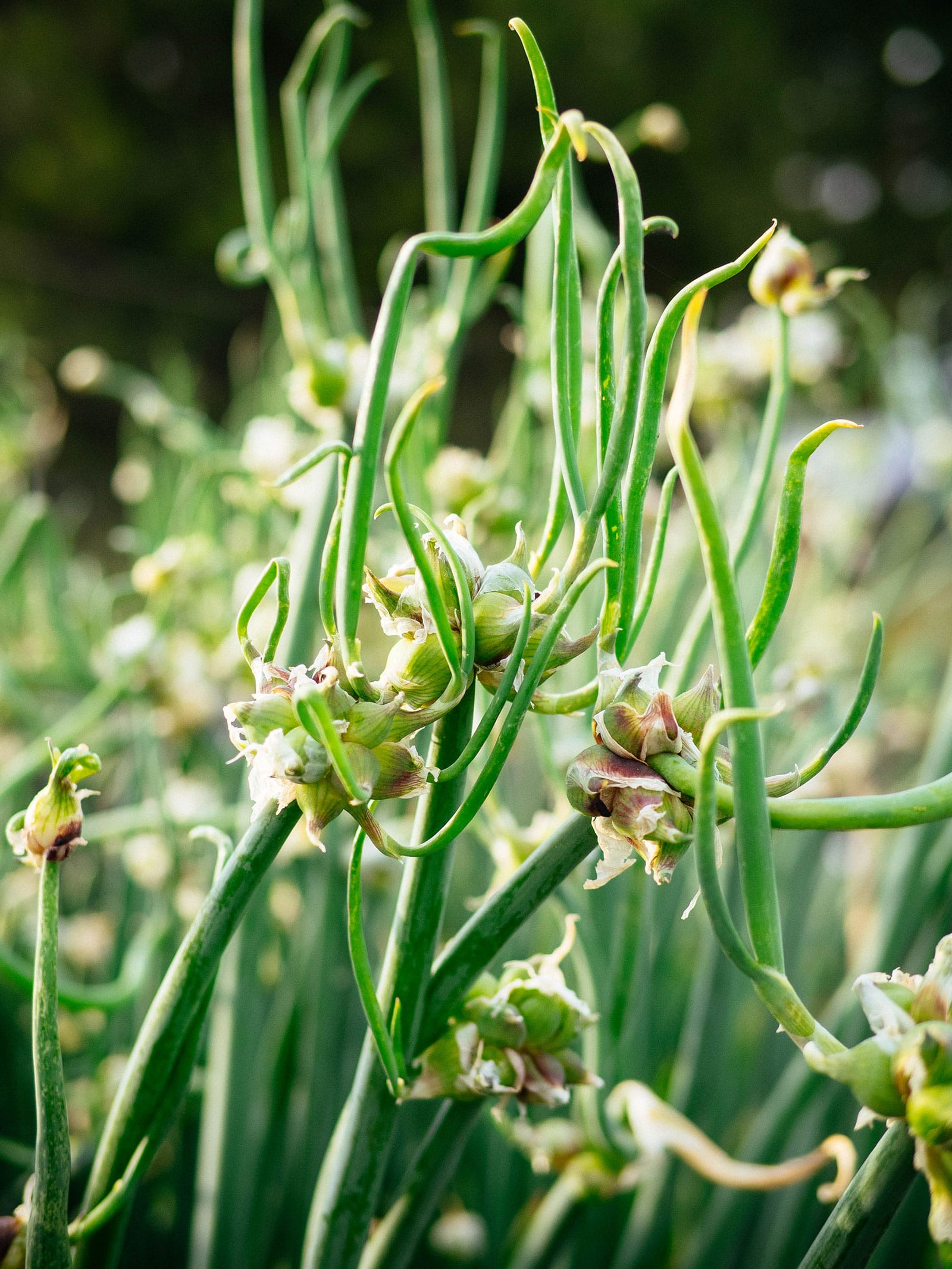
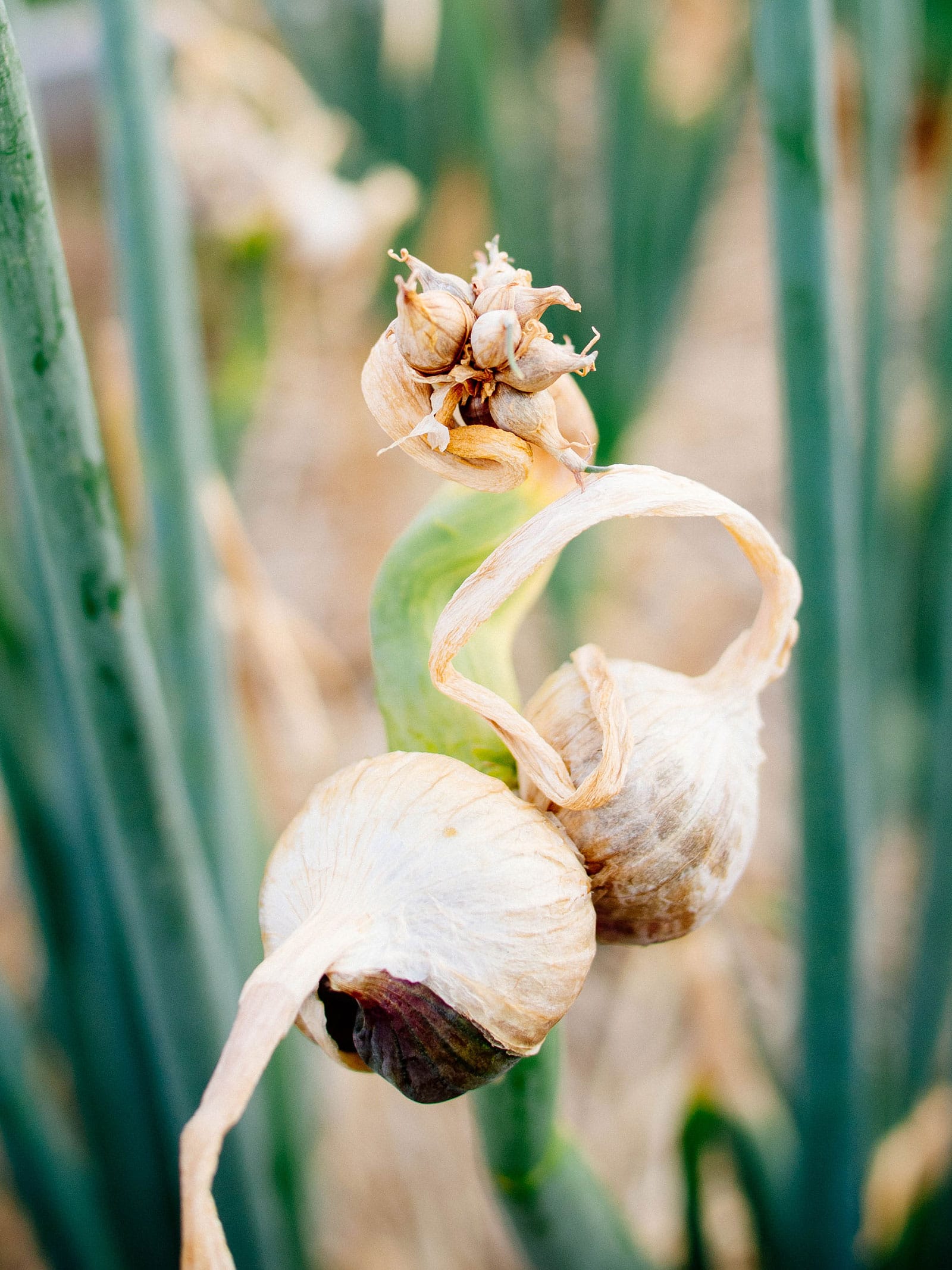
You don’t have to wait for the bulbils to grow larger or turn brown before you pick them to plant. Even the teeeeeny tiny bulbils will form new plantlets, as you can see below.
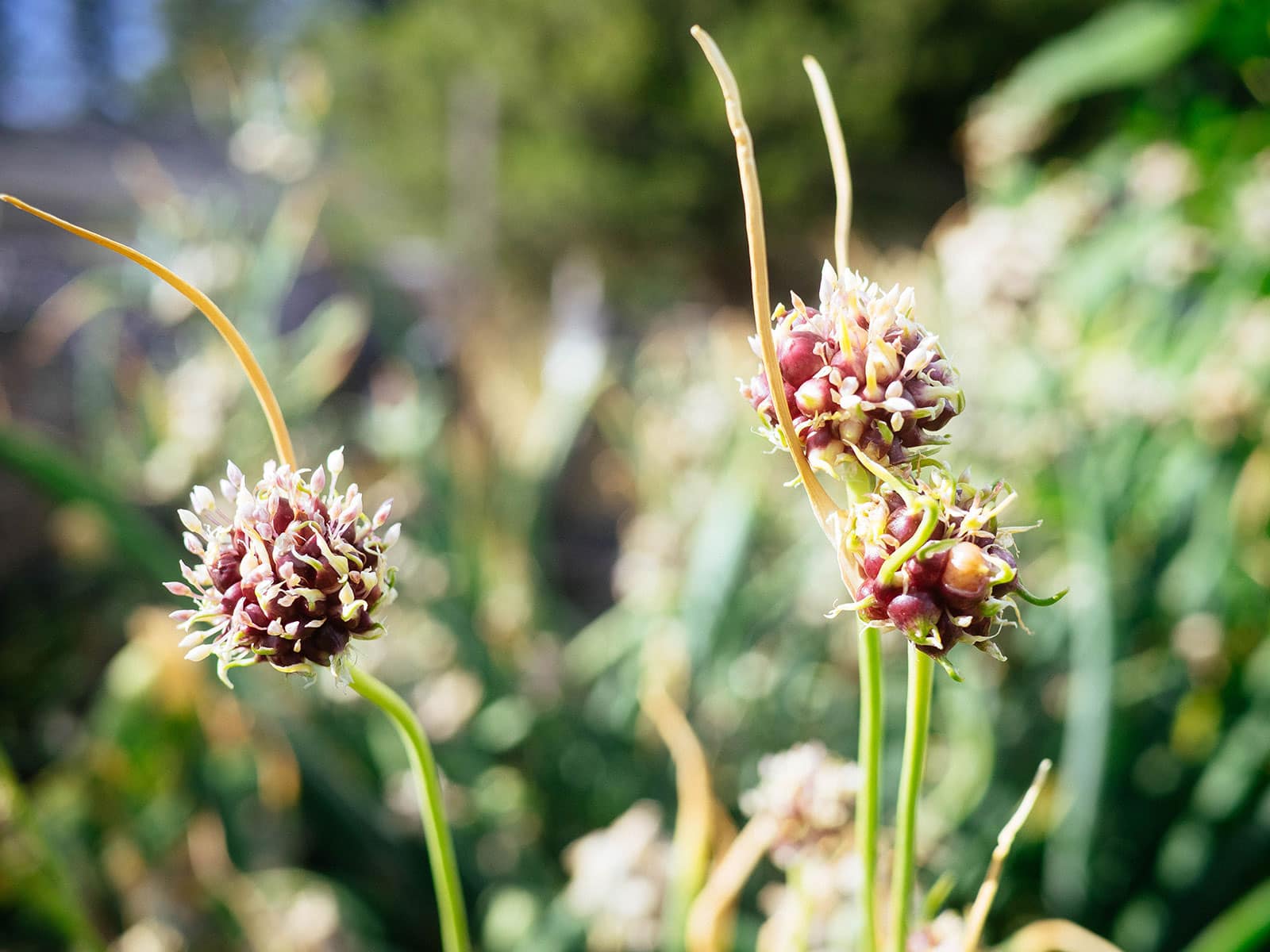
If you don’t have a reliable source for Egyptian walking onion topsets, I have organically grown topsets (from my own garden in Central Oregon!) available to ship to US addresses. You can purchase 10 or 25 bulbils to plant any time the ground isn’t frozen. (Your order will be processed securely through Square, my online payment platform.)
Shipping now
Organic Egyptian walking onion topsets
Fresh Egyptian walking onion topsets (bulbils) grown organically in my Central Oregon garden. Start your own low-maintenance patch of forever onions!
Walking onions also self-propagate by division at the base, but this is best done by digging up and splitting an established clump in spring.
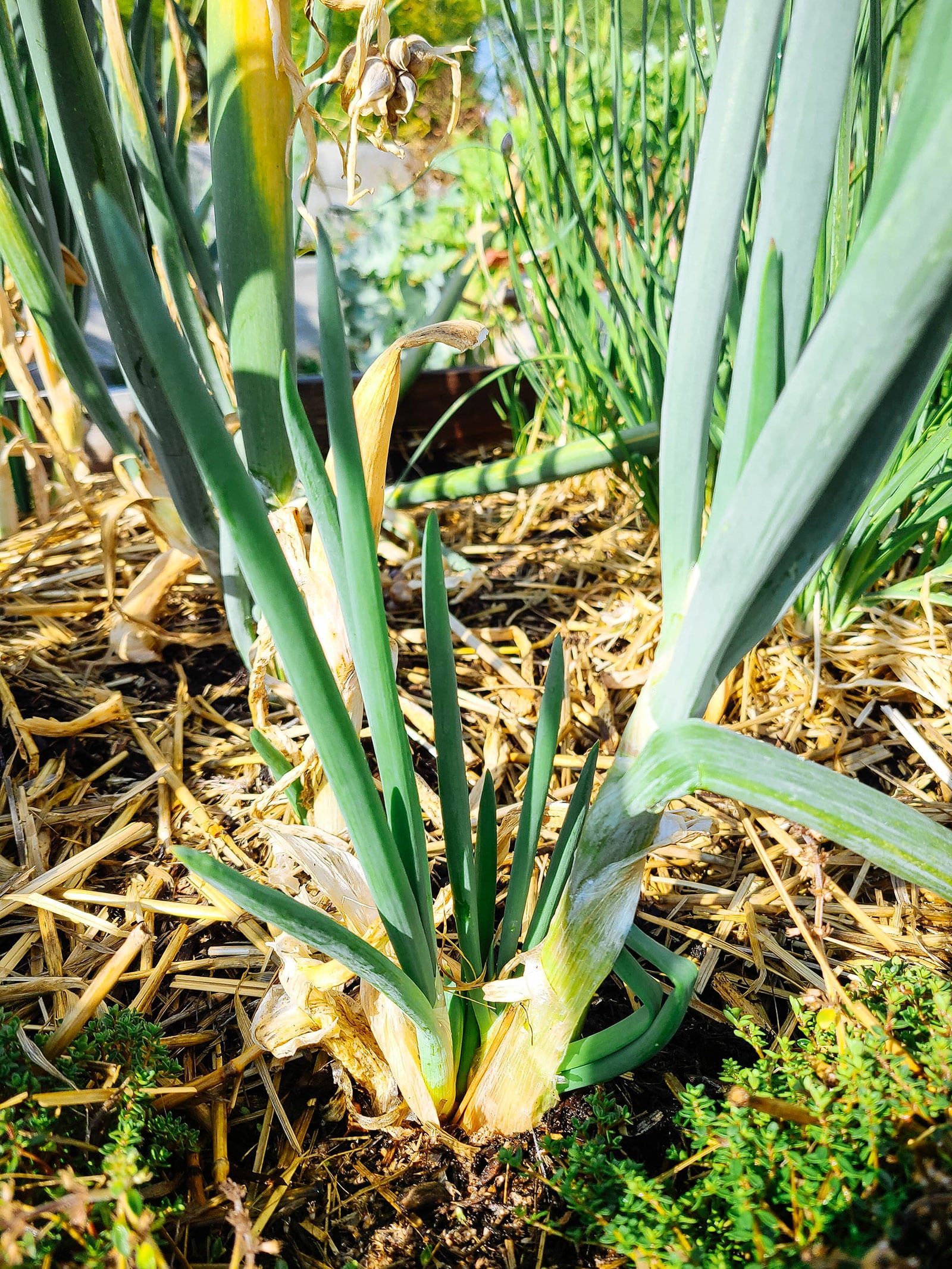
When and how to plant
While Egyptian walking onions grow in any weather, they tend to favor cooler temperatures and may struggle a bit if planted on a hot and dry summer day. Because of when they produce topsets and the timing of the season, fall is an ideal time to plant walking onions, but they can be planted at any time of year when the ground is not frozen.
(So if you’ve saved your bulbils until spring, by all means, plant them as soon as the soil thaws!)
Choose a full-sun spot in your garden where you intend to have Egyptian walking onions for a long time, as these are perennials that will multiply quite easily if you let them.
They’re not terribly picky about soil, as long as it drains well. I recommend adding a layer of high-quality, aged compost on top before you plant.
Now the easy part—just break off the bulbils and plant them!
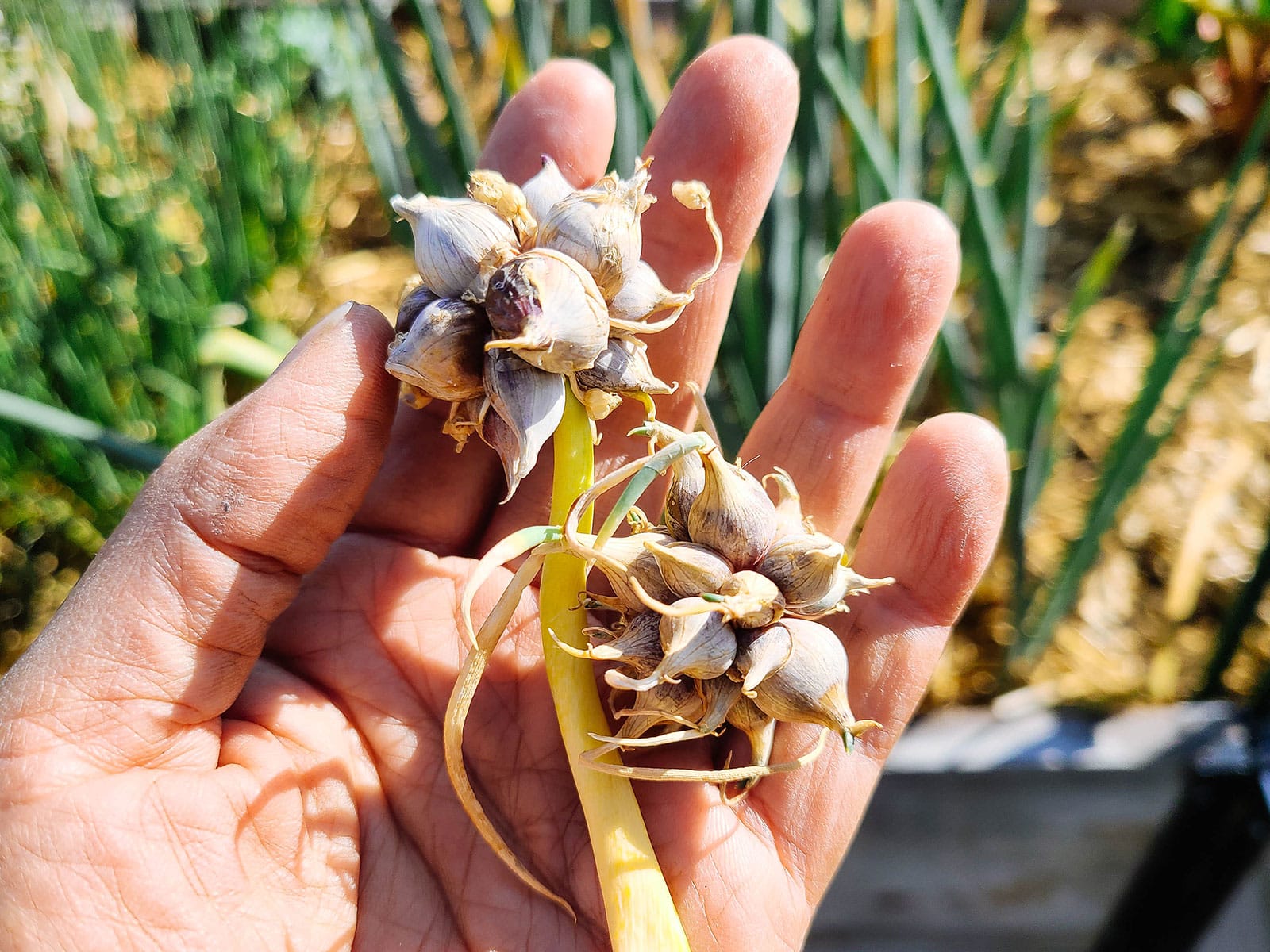
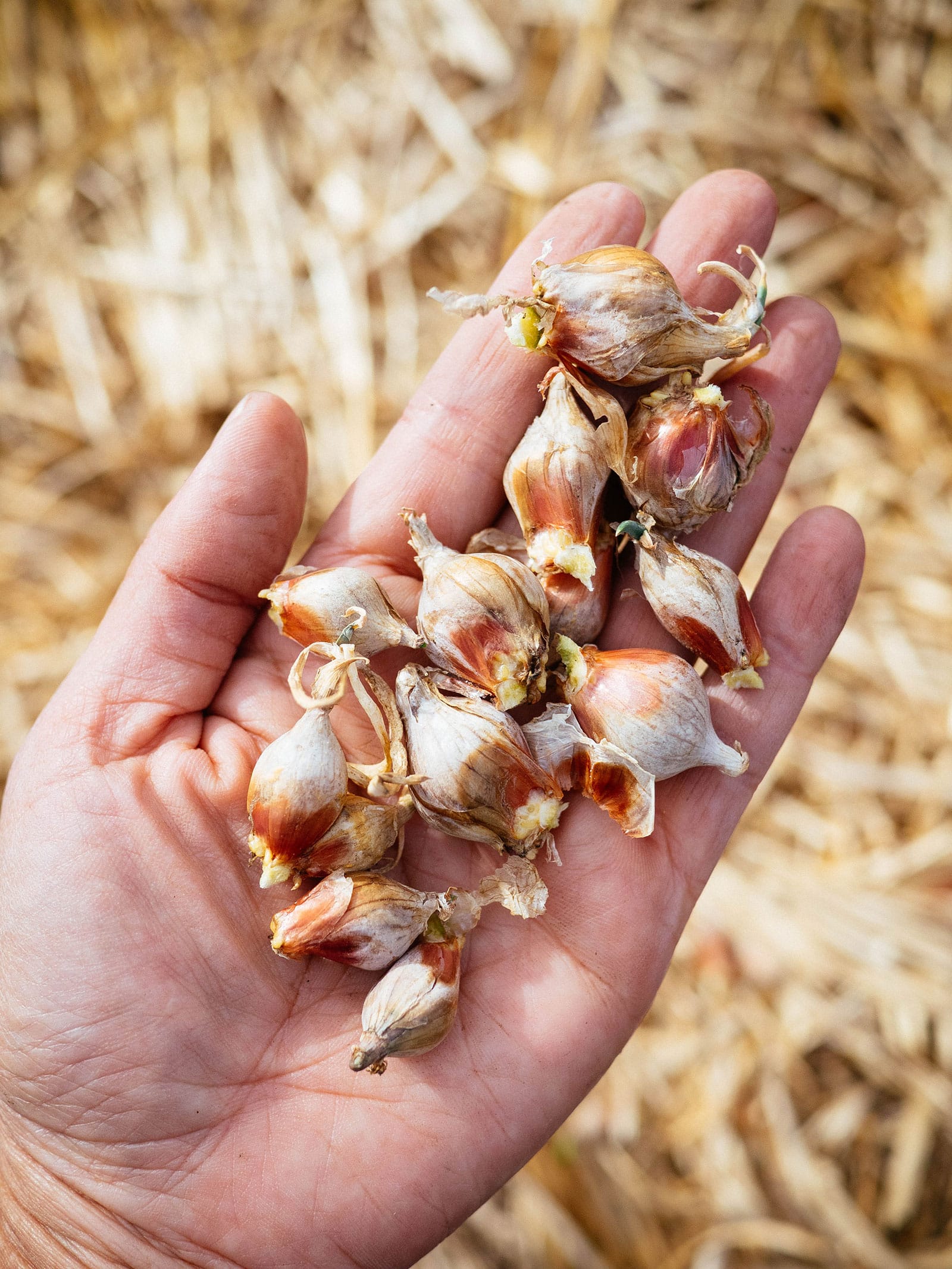
Place the bulbils about 1 inch deep (with the pointy end up) and at least 4 inches apart (up to 8 inches apart if you don’t want to divide the clumps for a few years).
If there’s already a green shoot sprouting from the bulbil, I like to plant with the base of the shoot (top of the bulbil) right at soil level.
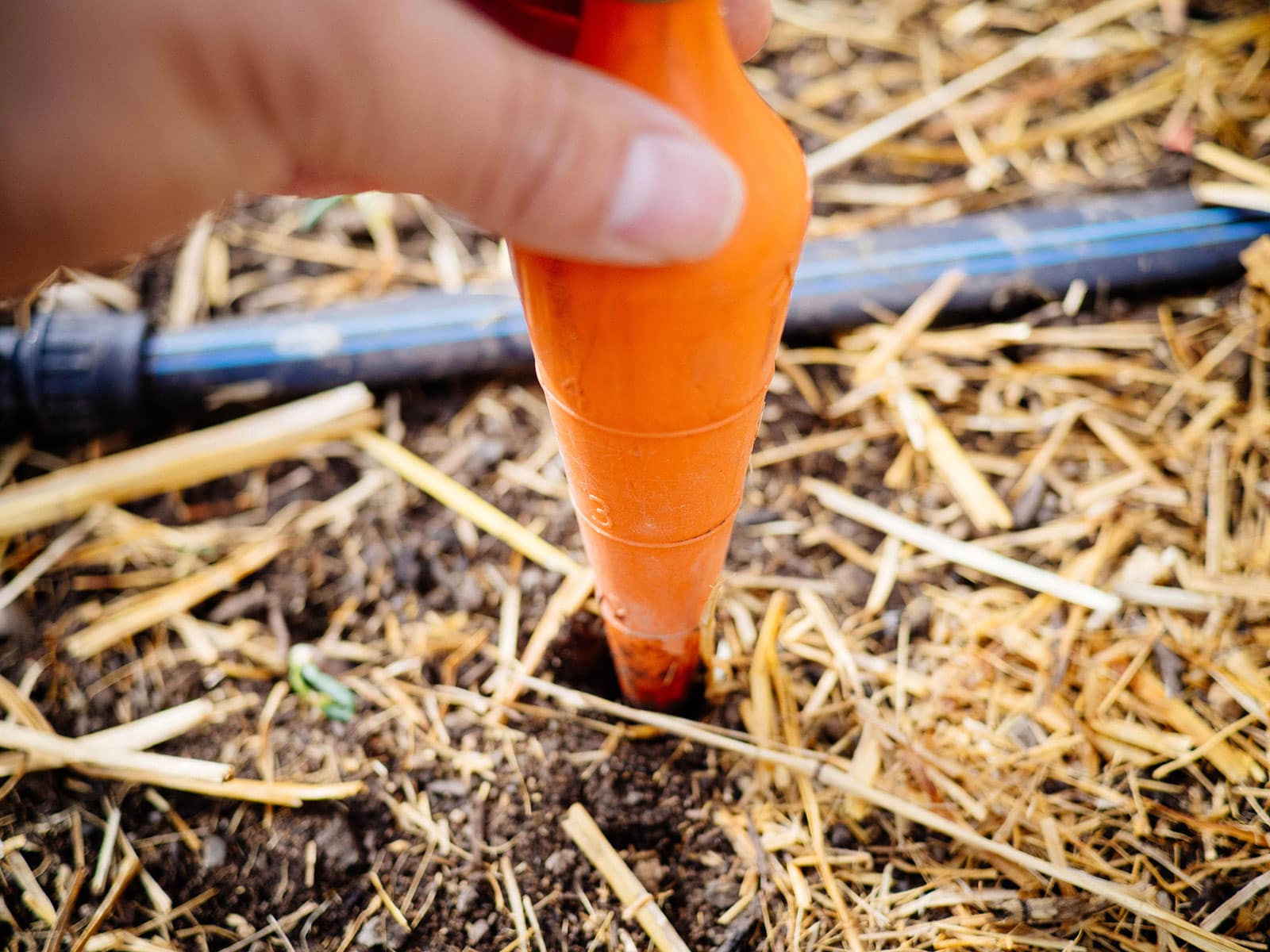
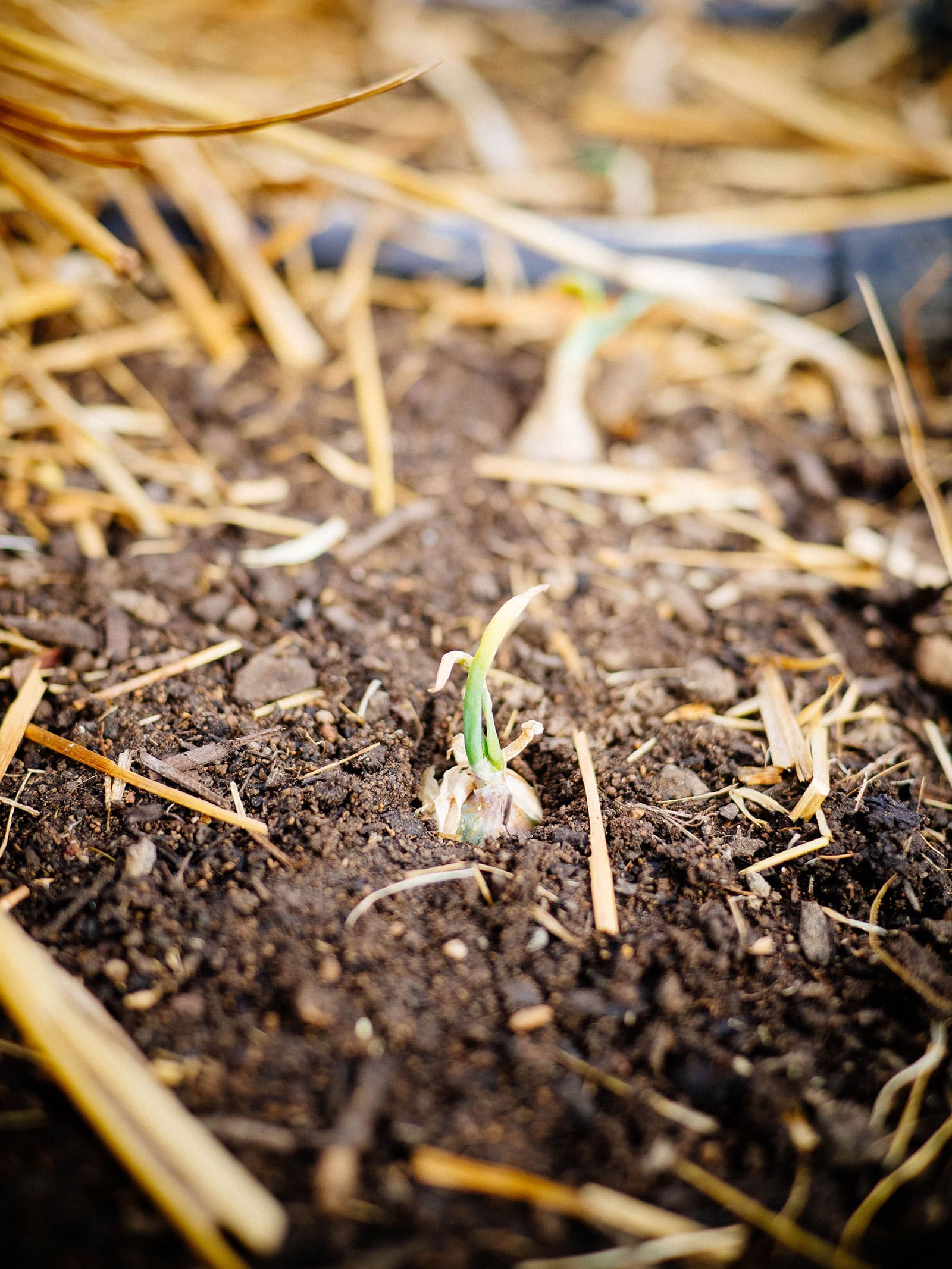
Each topset contains multiple bulbils and each individual bulbil will grow into a new plant. While it’s best to separate the cluster so your plants aren’t too crowded, walking onions actually grow well as a clump (similar to chives) so you can plant an entire cluster, as is, if the bulbils are very small. Growing in clumps like this will require dividing your walking onions sooner, however.
Related: Common types of perennials you should divide in fall
Once all of your bulbils are planted, water thoroughly. Mulching is typically not necessary since they grow quickly to cover any bare soil, but you should add a layer of organic mulch (like straw or even more compost) to protect the roots in areas with severe winters.
If your winter is relatively mild, your walking onions will grow slowly through winter and produce a harvestable bulb in spring. If your winter is colder, you may not see new growth until early spring and will get a harvestable bulb in summer.
Walking onions typically grow up to 2 feet tall, while the bulb at the base is usually around 2 inches in diameter (but may be as small as 1 inch or as large as 3 inches, depending on how close together your plants are).
How and what to harvest
All year long, you can harvest the tender green stems at any stage and use them like chives or green onions. (I like them most when they’re young, but this depends on the dish.) Cut individual leaves as needed or dig the entire clump to use. Egyptian walking onion leaves have a mild onion flavor and can be eaten raw or cooked.
Once the plant has grown to sufficient size, it will have a small bulb on the bottom (resembling an underdeveloped onion) that you can dig up and eat. It’s more pungent (hotter) than a typical white or yellow onion when it’s raw, but has a smoother, more mellow flavor when it’s cooked.
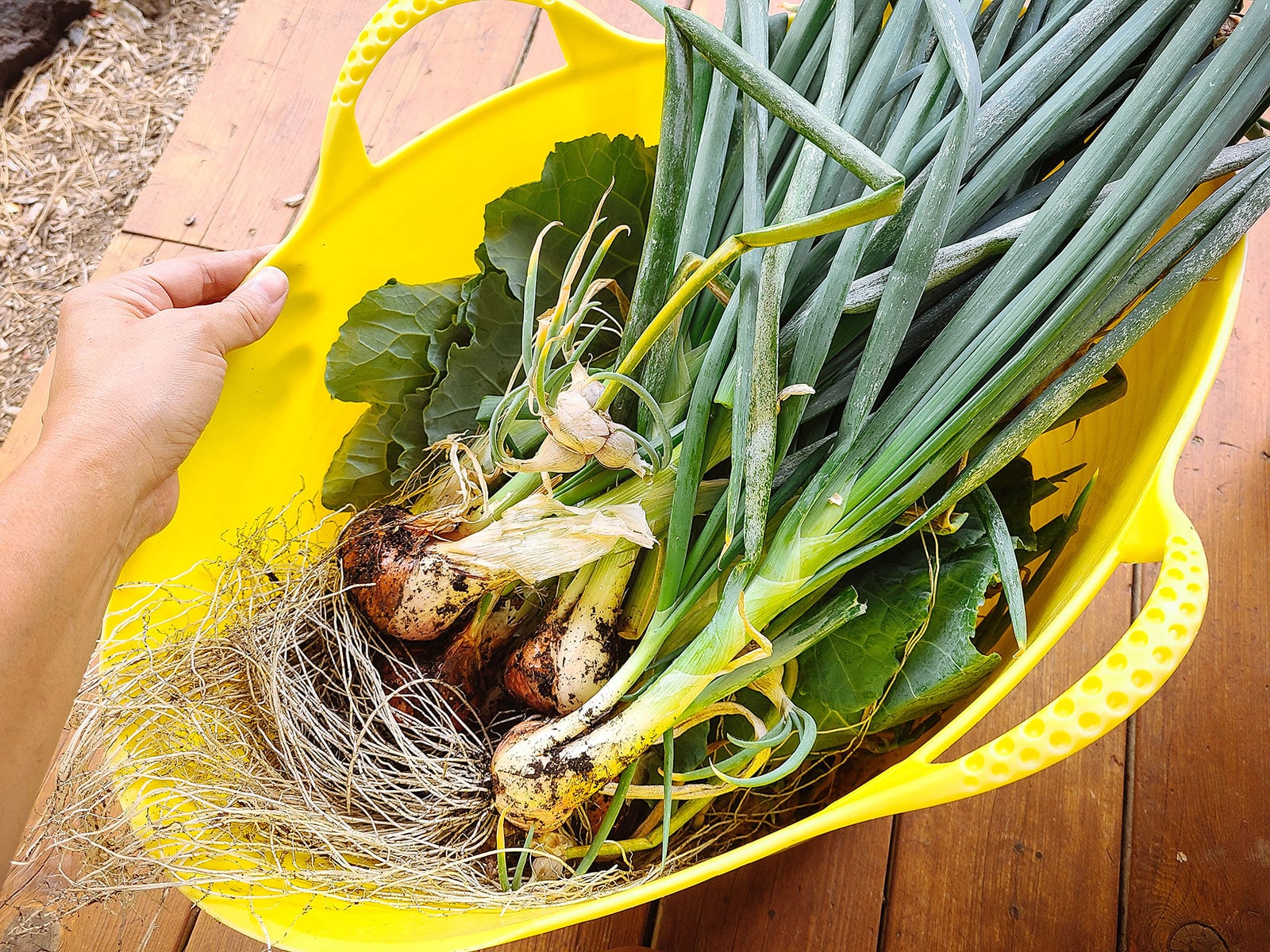
The bulbils themselves can be eaten too, if they aren’t replanted. Because they’re so small, and peeling can be quite tedious, I prefer using them whole before the skins have dried out too much. They can be added to salads for a burst of onion flavor, or chopped and sprinkled over a variety of food. You can also add them to a soup or even roast them.
If you have the patience, you can peel the largest bulbils and pickle them like pearl onions.
While the bulbs and leaves are best eaten soon after harvest, the bulbils can be stored for a few months in a cool, dry, well-ventilated area (either for eating or planting). Moisture will trigger them to produce plantlets, so if that happens, go ahead and plant them in potting soil to transplant outside later.
Annual maintenance
Your walking onions will need moderate watering until their roots are established. After that, they’re quite resilient and very drought-tolerant, able to thrive with little irrigation once they’re mature. But while they’ll be okay if you forget to water, drought conditions will often result in smaller bulbs underground (if you want to harvest those).
Depending on the size and spacing of your plants, clumps should be divided every one to two years in fall. Divisions should be replanted in fall and bulbils can be saved and planted any time the soil isn’t frozen.
Read more: How and when to split your garden perennials
If you never harvest the bulbs or topsets, Egyptian walking onions will multiply freely where they are and you’ll never have to buy scallions again!


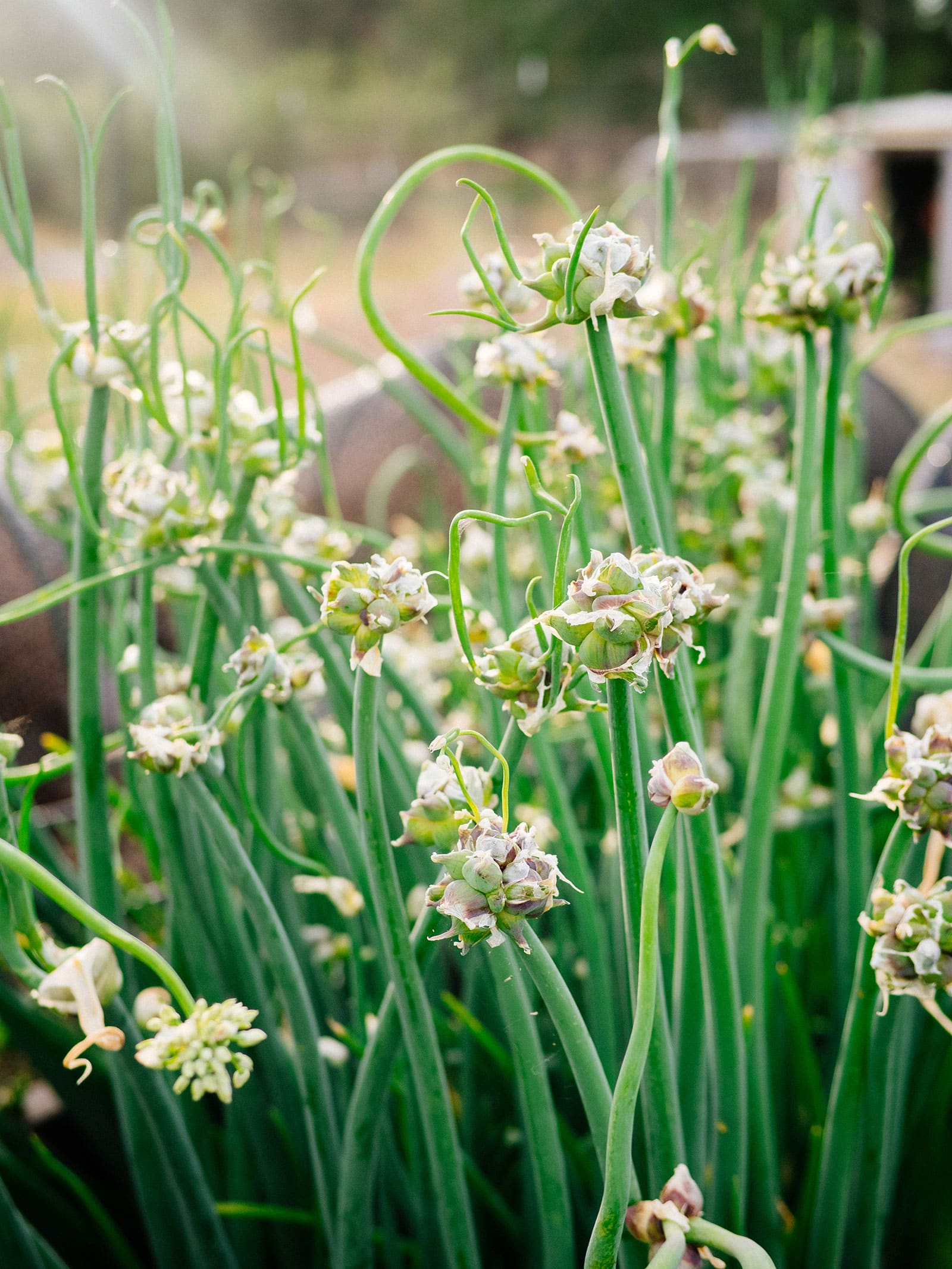
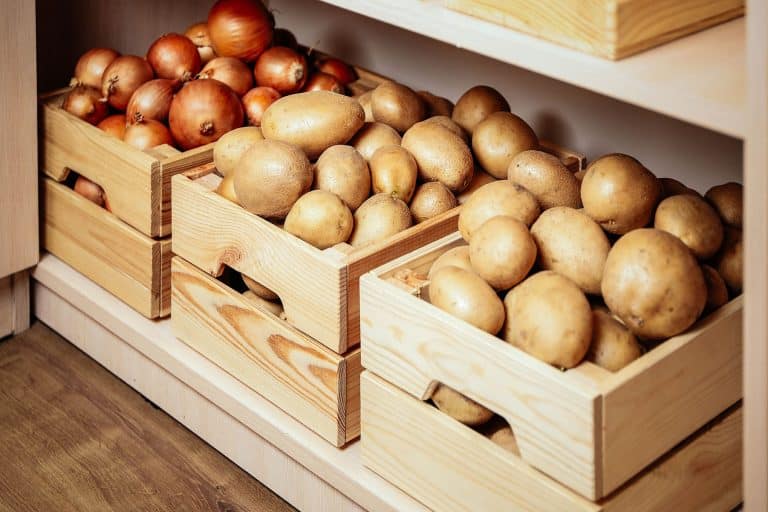
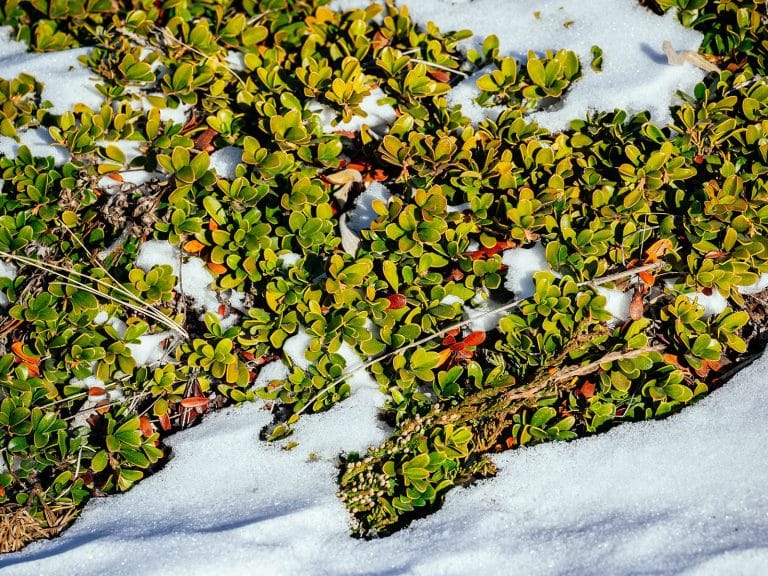
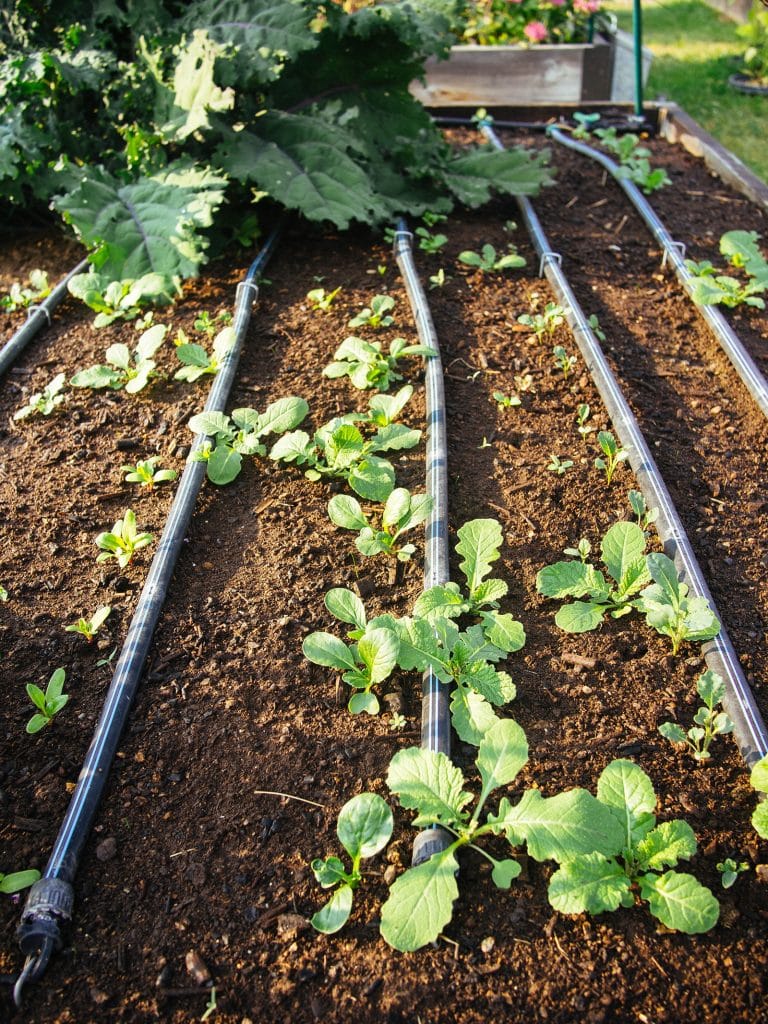
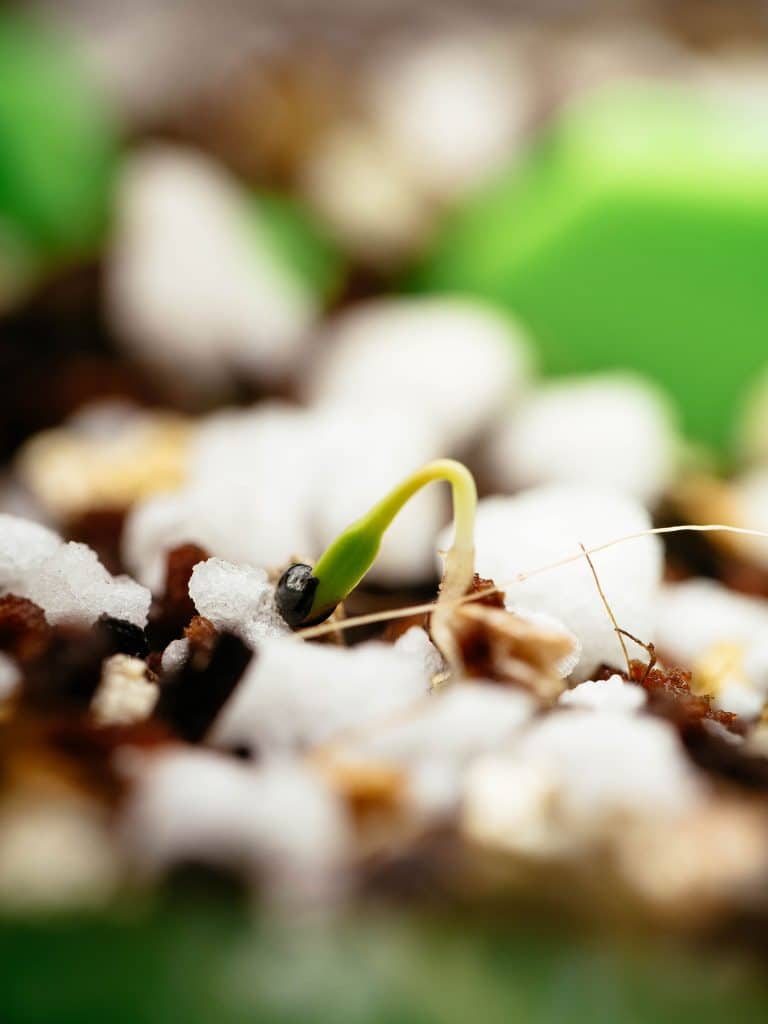


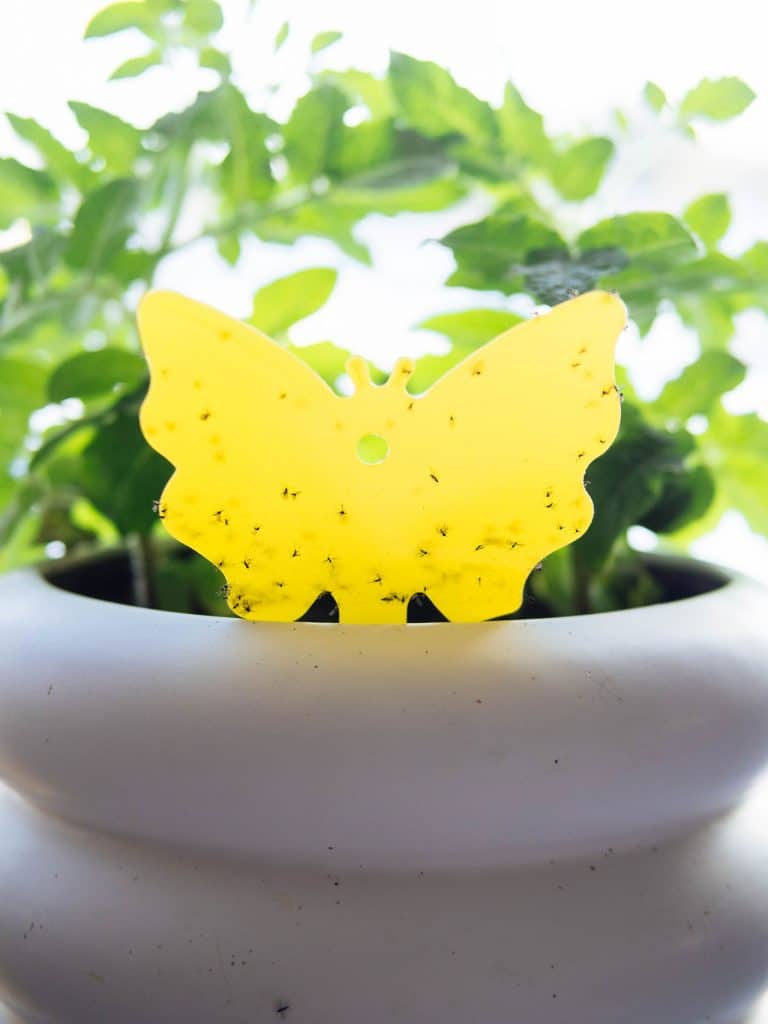
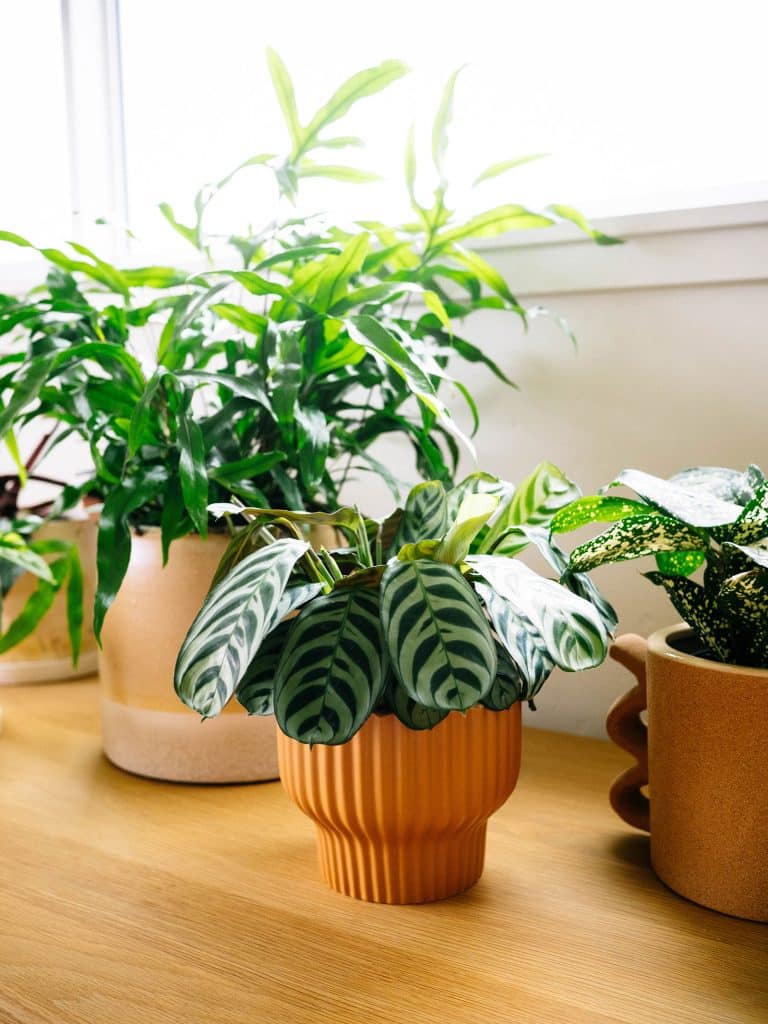
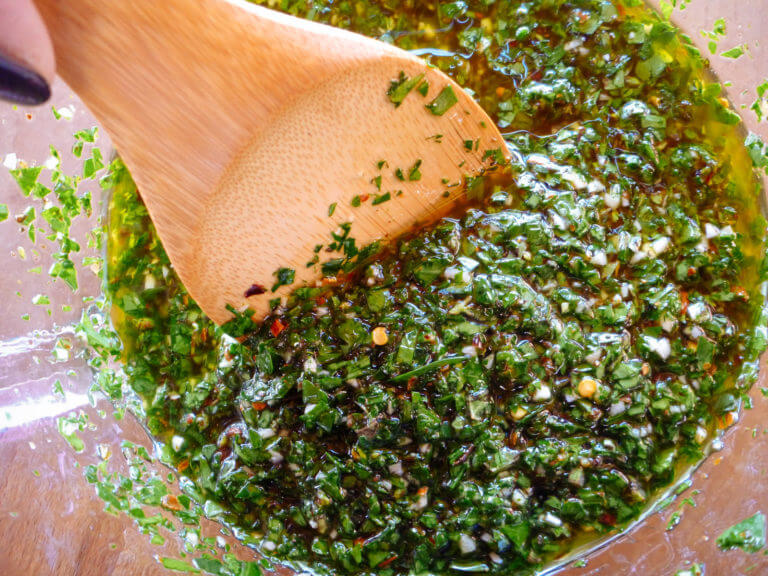
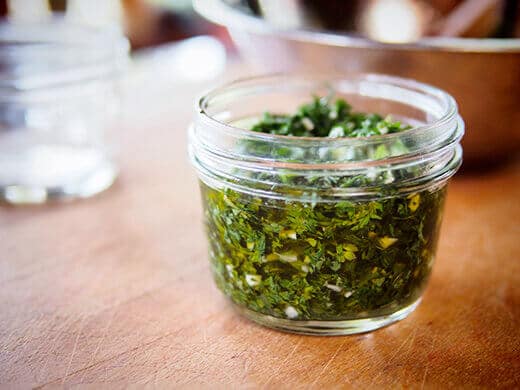
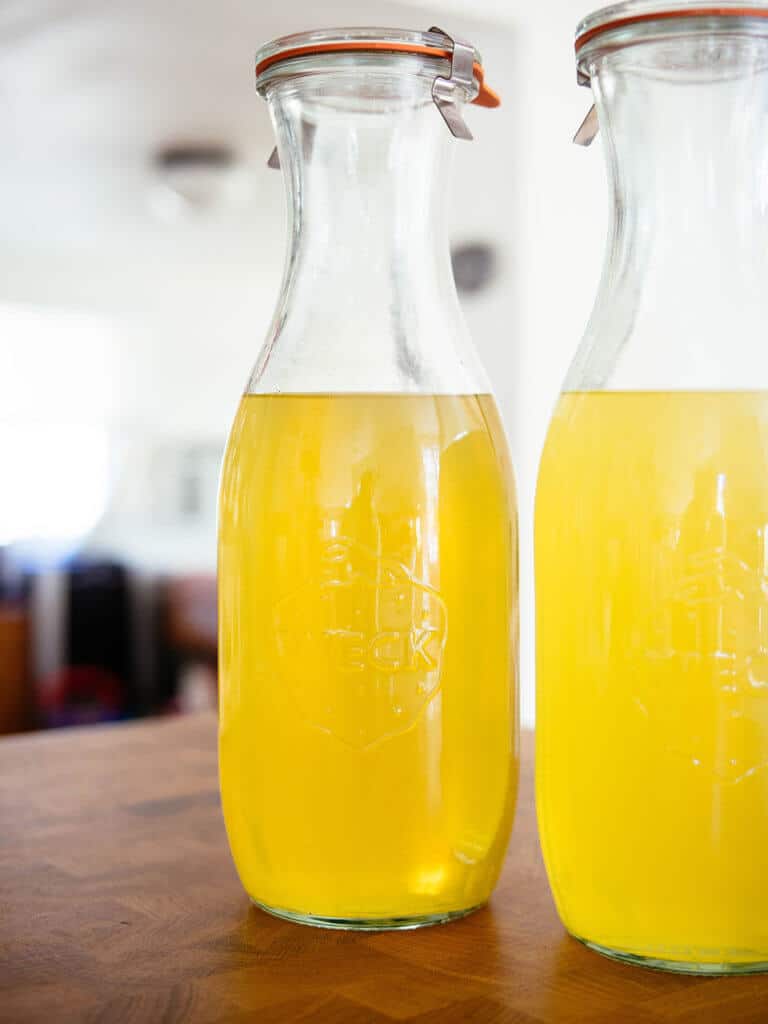
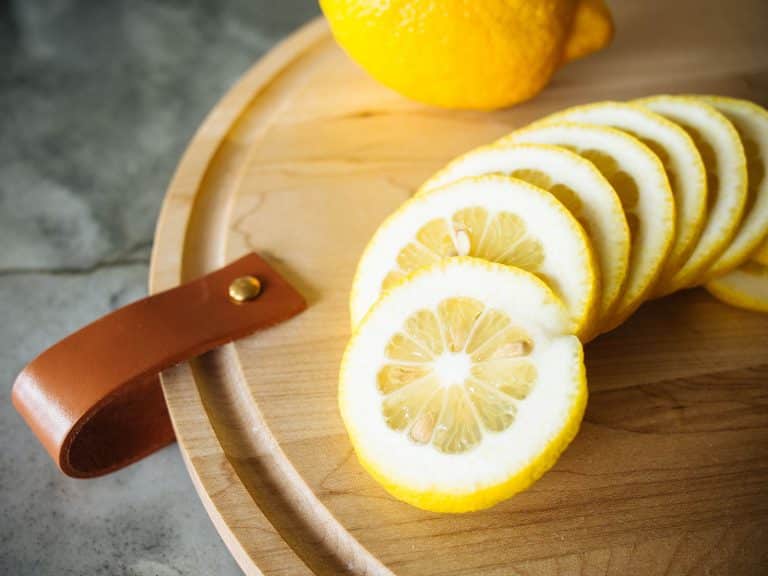

Is there any winter care that should be done to the onion patch before the snows come? I live in WI and started my Egyptian onion patch this spring from my bothers patch by transplanting a larger bunch. Thanks, Kathy
When my walking onions die back in winter, I leave the spent foliage on top as a mulch and don’t do anything else. Once I see new growth in spring, I clean up all the old leaves.
You mentioned they struggle in hot dry summer. I live in the Sonoran Dessert in Arizona in the high dessert. Summers are very hot & dry (90s & 100s). Some Frost & Snow in winter but it doesn’t last & ground doesn’t freeze. I’m just ndering if I should even try growing Egyptian Walking Onions?
You can definitely still grow walking onions. I recommend giving them some dappled shade or growing your patch between taller plants to help them get through the hottest part of summer. I’ve also found, from personal experience when my summers exceed 90°F, that frequent harvesting keeps the plants healthier and the leaves greener.
Egyptian top-set onions are also one of my garden favorites. I just came in from harvesting some that will be included in meals here in the near future. My strain produces a maximum. of six bulblets so I was fascinated to see pictures of your clusters approaching twice that number. Possibly you have a different strain. In my experience, besides tiny bulbs, the shoot sometimes produces blossoms. In your experience, do the flowers ever result in seed, which might be the case if they are self-fruitful. Or perhaps the seeds are infertile, as is sometimes the case in inter-species crosses. I was also surprised to see that they grow into USDA zone 10. I planted some when we lived in zone 9 and they faded away. Possibly they require more fuss in warmer climates than they needed when I grew them in western Massachusetts. If your plants produce seed, I’d like to purchase some to see what they produce. Finally, I am grateful for the botanical binomial that you provided as I had them listed as A. cepa in my database. Anyone who does not have this extremely useful vegetable should take you up on your offer to see some bulblets.
I occasionally see flower heads but not a lot of seeds. From what I’ve read, the seeds are sterile since walking onions are man-made hybrids. And that seems to be true as I’ve never gotten volunteer plants from self-seeding plants—they’ve all come from replanted bulbils. I’m not sure what strain mine are but the topsets vary from just 2-3 huge bulbils (cherry size) to upwards of 10-20 tiny bulbils! No matter the size, they all produce plantlets.